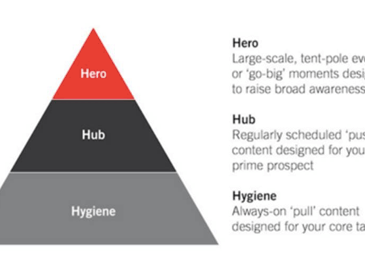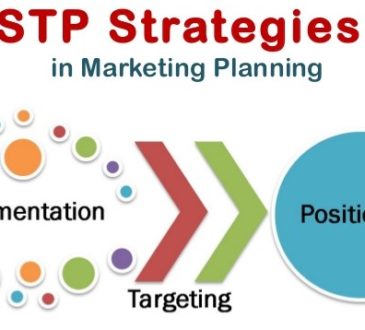The past history of marketing, as a discipline, is meaningful because it helps to define the baselines upon which change can be recognised and understand how the discipline evolves in response to those changes. The practice of marketing has been known for kiloyears, but the term “marketing” used to describe commercial activities buying and selling a products or services came into popular use in the late nineteenth century. The study of the history of marketing as an academic field emerged in the early twentieth century.
Origin
Middle English, via Anglo-Norman French from Latin mercatus, from mercari ‘buy’
Ref: – Google
The first Industrial Revolution as per records was started in 18th century from Europe ended in 19th century, involved a change from mostly agrarian societies to greater industrialization as consequence of STEAM ENGINE and other technological developments. India was nowhere in development race during that period, depended completely on ruler East India Company (UK). Whatever they have developed was only to facilitate their requirement.
The concept of marketing began during this period spanned the late 18th century and lasted long into the 19th century. It was a time of social change motivated by innovation in the scientific and technological industries.
It was during this period that purchasing goods began to be easier for a consumer than make things themselves. Mass production created many industries engaged in the same to serve the needs of a growing consumer market. The infrastructure for transportation as well as mass media took hold. It created a need for producers to find better ways to develop products customers needed and a more innovatory approach to informing them about these products.
Attempts to accomplish this may be as old as civilization itself. Some believe it started with trying to presents goods in a certain way for trading. The effort to develop communications for selling goods and services has been around since the times of ancient China and India. This activity may not have been recognized as a marketing business at the time, but it is where the idea for marketing started to develop.
Second Industrial Revolution was started in second half of 19th century has been on peak till first half of 20th century driven by Oil, Gas and electricity. Communication methods are been developed, such as the telegraph/telegram and telephone. India was still not in the race.
Starting in the early twentieth century to the late 1940s competition in the business world became intense. The need to increase selling by using marketing techniques became an essential part of being competitive. The ability to develop a brand and appropriately market it grown in value.
The competition also drove the need to increase production outputs and market shares within all industries. Marketing began to focus on distribution methods as well as types of end user communication. The goal soon became to motivate end user the goods and services provided by one company were better than those of another company offering the same thing.
Starting in the 1960s the markets in many industries fill tough to survive in competition. The need to get and keep customers now required specialists in the area of direct marketing. This is a time when companies began dedicating entire areas of their business for the sole purpose of marketing a company’s products or services.
This was when marketing management developed the necessary to be an essential part of business success. Marketing managers began to be involved with strategic planning. Their input was important for determining the cost, the methods used to communicate information about products and services to consumers and more.
Third face of Industrial Revolution has changed the world with different inventions in electronics, telecommunication and computers in second half of 20th century. In last decade of 20th century Information Technology has gear-up for new levels. India has shown his strong presence and attracted world as huge market for all products. Also, India has become hub for service provider in field of Information Technology. It was not yet over in last decade many new technologies such as Internet, cellphone and laptops where welcoming 21st century. Now with the help of that everything has been transferred to digital world in first decade of 21st century. These has multiplied by emerging technology breakthrough in field of Artificial intelligence, robotics, 3D printing, Nano-technology, bio-technology, etc.
The world of marketing began to change during the 1990s. A product or service was created and instantly a brand was developed. Companies began to realize they could focus on selling more high-quality products and build a better brand for them. This resulted in companies experiencing an improvement in their margins, but also expanded their reputation. It also increased the awareness of the brand they had created. Some companies with a private label were able to improve their market share.
With the evolution of the web, websites started being an essential tool for commercialization. During the late 1990s, simple company websites that were text-based began to flourish. They were initially utilized to provide information about a company’s products or services. Today, hundreds of billions of dollars are spent each year on the marketing business.
Key innovations that influenced marketing practice
- 1450: Gutenberg’s metal movable type, leading eventually to mass-production of flyers and brochures
- 1600s: Paid advertising in Italy
- 1600s: Use of handbills and posters is common practice in Elizabethan England
- 1605: World’s first newspaper published in Germany
- 1600s and 1700s: Posters and handbills used for promotion in England
- 1665: The Oxford Gazette first published in England (later renamed the London Gazette and still published today)
- 1700s: Widespread emergence of newspapers and magazines in England and France; by the 1730s daily newspapers in London devoted more than half the available space to advertising
- 1719: The Daily Post first published; early instance of a periodical dedicated to business, science and innovation
- 1836: Paid advertising in a newspaper (in France)
- 1839: Posters on private property banned in England
The telegraph was an early form of mass communication
- 1864: Earliest recorded use of the telegraph for mass unsolicited
- 1867: Earliest recorded billboard rentals
- 1876: Films produced by French film-makers, Auguste and Louis Lumiere, made at the request of a representative of Lever Brothers in France and feature Sunlight soap, are thought to be the first recorded instance of paid product placement.
Sunlight was an early advertiser in cinema, radio and TV. Pictured: Advertisement for Sunlight Soap washing powder, 1897
- 1880s: Early examples of trademarks as branding
- 1902: The first marketing course, taught by Edward David Jones, was offered at the University of Michigan
- 1905: The University of Pennsylvania offered a course in “The Marketing of Products”
- 1908: Harvard Business School opens – Harvard was an early influence on marketing thought
- 1920: The magazine, Variety, reports that 50% of cinemas show advertising programmes
- 1920s: Radio advertising commences
- 1940s: Electronic computers developed
- 1941: First recorded use of television advertising
- 1955: Television viewing exceeded radio listening for the first time in Britain
- 1950s: Systematization of telemarketing
- 1957: Three key scholarly texts published Wroe Alderson‘s Marketing Behavior and Executive Action; Howard’s Marketing Management and Lazer’s Managerial Marketing: Perspectives and Viewpoints
- 1960 E. Jerome McCarthy published his now classic, Basic Marketing: A Managerial Approach (1960).
- 1970s: E-commerce developed
- 1980s: Development of database marketing as precursor to Customer Relationship Management (CRM)
- 1980s: Emergence of relationship marketing
- 1980s: Emergence of computer-oriented
- 1984: Introduction of guerrilla tactics
- 1985: Desktop publishing democratises the production of print-advertising (precursor to consumer-generated media and content)
- 1991: Integrated Marketing Communication (IMC) gains academic status
- Mid 1990s: Modern search engines started appearing in the mid-1990s, with Google making its debut in 1998
- 1990s CRM and IMC (in various guises and names) gain dominance in promotions and marketing planning,
- 1996: Identification of viral marketing
- 2000s: Integrated marketing gains widespread acceptance with its first dedicated academic research centre opened in 2002
- 2003 -2006: Emergence of social media. MySpace and LinkedIn emerged in 2003, Facebook in 2004 and Twitter in 2006. List till 2020 has become very long in the field of social media
In 2nd decade of 21st century world is been changed; new generation is well equipped with technological knowledge. Impressive progress has been made in field of Artificial Intelligence in recent years driven by exponential increases in computing power and by the availability of vast amount of data from software used to discover new methods used to predict our consumers interest.
Within the past 25 years, the importance of using the web and search engines for marketing has increased dramatically. In the beginning, web search engines were not the most efficient operations. Getting a good ranking with a search engine was not complicated. Search engine results were easy to alter, and the quality of the results was poor.
To provide the best quality results, search engines changed their principles. The goal was to validate referring sites to ensure the quality of results provided by the search engine. It is now almost impossible to manipulate SEO rankings.
Note: – Source of some data is from Google & Wikipedia
Request your suggestion in comment-box below to continue writing






